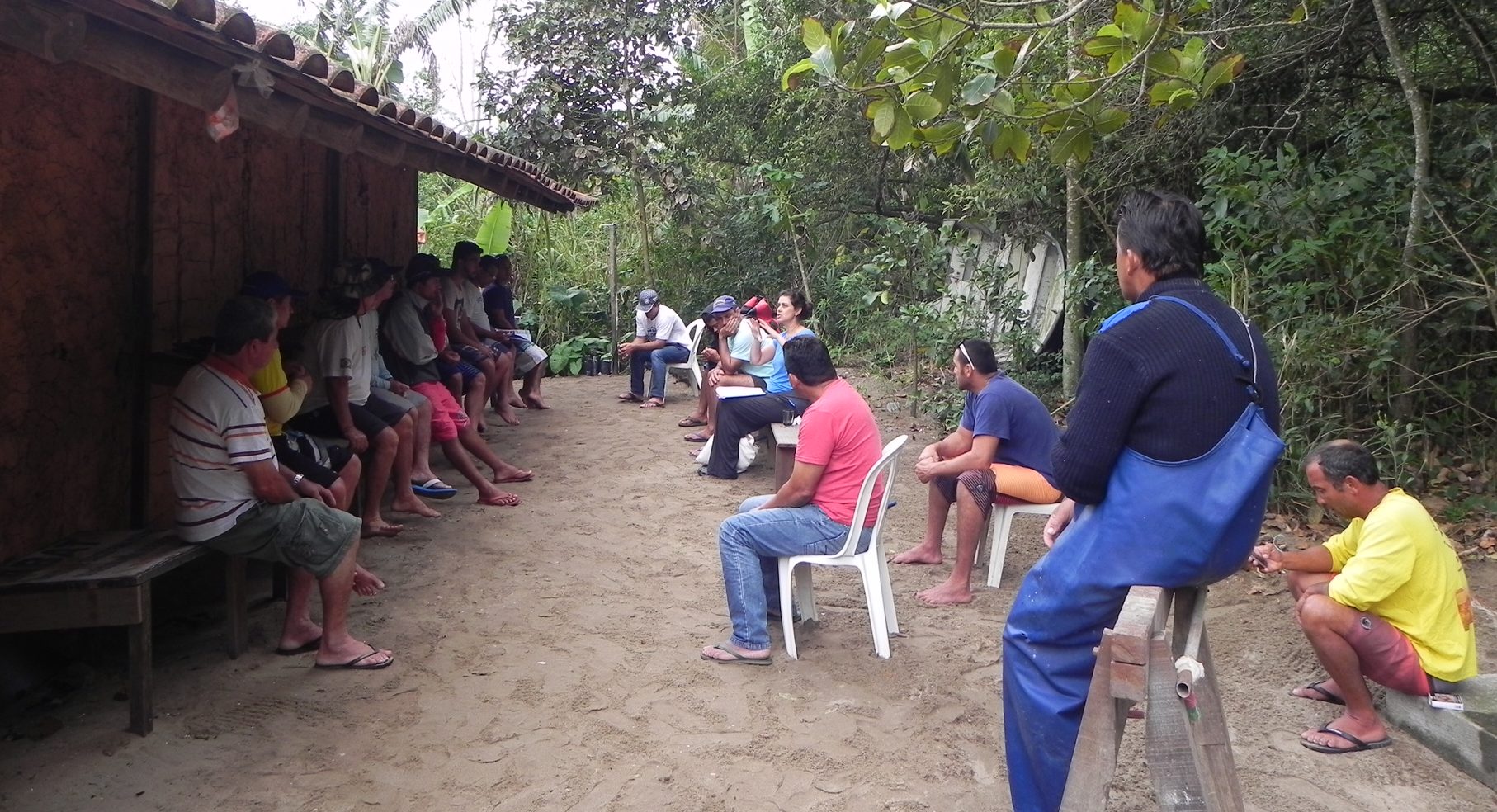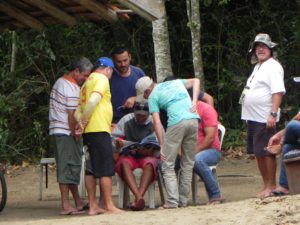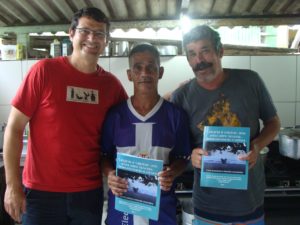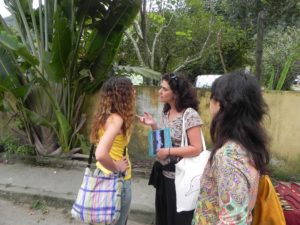
31 Oct Reporting back to communities: an important step in the academic research process
Since 2009, the Commons Conservation and Management Research Group (CGCommons) of the University of Campinas, a partner in the CCRN, has been carrying out research in eight Caiçara and Caipira communities in the southeastern region of Brazil.
As part of a key belief of the CGCommons, affiliated researchers and students are committed to report research findings back to local communities and social actors. The CGCommons understands this step as fundamental to (i) communicate research findings in lay language; (ii) motivate community individuals, such as local fishers, to reflect upon the research findings and their contributions to the community; (iii) talk about the role of researchers and the relationship between academia and communities; and, (iv) to strengthen the connections and trust between researchers and communities.

Fishers reading the booklet during the group talks.
During August and September 2016, researchers Camila Islas and Ana Carolina Dias organized several small meetings to share research findings with community groups (mainly fishers) from the communities of Tarituba, Trindade and Praia do Sono, in Paraty, Brazil. The meeting activities included: (i) individual conversations with community leaders, leaders of community-based organizations and key-individuals that contributed to the research projects and, (ii) group talks (rodas de conversa) in communities where large groups of community members were able to participate in the meetings.

Fishers receiving a copy of the booklet.
The CGCommons research findings from the various communities were compiled and printed into a booklet entitled “Caiçaras e Caipiras: uma prosa sobre natureza, desenvolvimento e cultura – 7 anos de pesquisa e extensão universitária” (“A prose on nature, development and culture: seven years of research and university outreach”). This booklet, which presents key findings in lay language, was also distributed to community leaders, community organizations, as well as to other organizations whose work is aligned to the interests of these communities.
The booklet was launched in September 2016 through individual conversations and a group talk in Trindade. About 27 individuals (among them 17 fishers) joined such conversations and discussed the role of the university in the community. The group talk, facilitated by CCRN researcher Luciana Araujo, took place at the beach, a daily gathering place for local fishers. The group reflected upon and evaluated the relationship between the university and community regarding collaborations, products delivered and capacity building for both researchers and community members. Participants, individually or in groups, emphasized that the commitment by the CGCommons researchers to communicate research findings is not common among academia and they recognize the importance of this initiative. Participants clearly remembered the students and researchers that conducted research in Trindade, their collaboration during their projects and thereafter. Regarding the booklet, they expressed the value of having a publication in lay language to communicate, evaluate and share findings among each other.

CCRN researcher Luciana Araujo discussing findings of the booklet with a community member.
During the group talks, fishers linked research findings to their day-to-day problems in fishing and livelihood needs, and the challenge of making knowledge work in favor of small-scale fishing, such as in policy-making and management decision-making. They emphasized the importance of building trust with CGCommons researchers, which resulted in specific collaborations and the hiring of one researcher from CGCommons to assist the boatmen and small-scale fishers’ organization of Trindade.
Participants also valued the way CGCommons has been developing research in Trindade, based on trust, collaboration and a continuous relationship building. The initiative of communicating research findings was considered the most important part of the research process by community members because, it is in this phase, that they can learn and better understand what the research project consists of and how it can be useful for the community. A key message from the CGCommons is that this example may help the negotiation process between the communities and researchers. The CGCommons understands that sharing research findings with communities is a pathway to empower them, in that individuals have the chance to meaningfully contribute to the research process and collaborate with researchers on building knowledge based on their reality, livelihoods, conflicts and worldviews.


